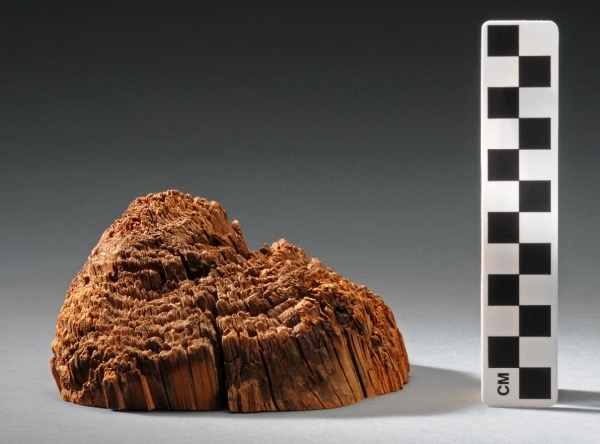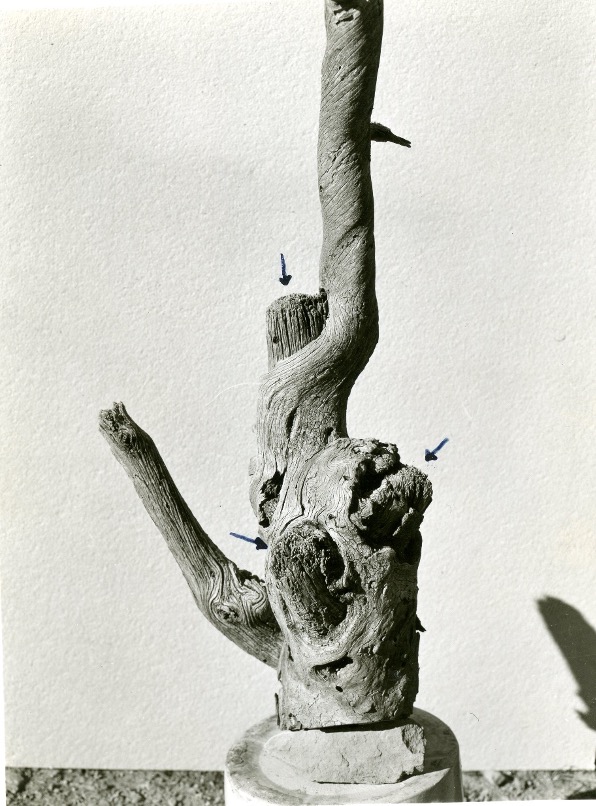The Phantom Forests That Built Mesa Verde
Mesa Verde National Park (MVNP) in what is today southwestern Colorado is a UNESCO World Heritage site dedicated to the preservation and presentation of the amazing cliff dwellings and other structures built and used by Ancestral Puebloans from roughly A.D. 600 until the end of the 13th century.
Visitors to spectacularly beautiful sites such as Cliff Palace and Spruce Tree House find them mesmerizing, unforgettable, and thought-provoking. These and other cliff structures were handmade with millions of sandstone blocks, thousands of wooden beams for roofing elements, and copious amounts of adobe mortar, branches, and grasses. Even more remarkable, however, is that Ancestral Puebloans built these structures high up from the valley floor and below the mesa tops, in dry rockshelters that formed naturally in the region’s sandstone cliffs.
Without wheeled carts, draft animals, or easy access to water, the builders had to invest an immense amount of labor—it seems positively overwhelming. These sites stand in mute testimony to the tenacity, ingenuity, and architectural and engineering sophistication of their inhabitants.
As an archaeologist and dendrochronologist (a scientist who studies tree rings), I’m particularly fascinated by the wood used to build these cliff sites. To build and maintain structures in Mesa Verde, Chaco Canyon, and elsewhere across the greater Four Corners region, Ancestral Puebloan construction workers needed thousands of wooden beams. To get those beams, loggers harvested trees from the surrounding forests using a stone ax attached to a wooden handle.
Loggers using stone axes leave distinctive markings on both the harvested beams and the tree stumps from pounding away at wood around the tree’s entire circumference until the tree can be bent over and broken at the stump.
Archaeologists have recovered stone axes all over the U.S. Southwest, and experiments have shown they are a surprisingly effective tool at chopping down trees and shrubs, breaking ground, and accomplishing other tasks. Archaeologists have also documented hundreds of beams originally cut with stone axes preserved in Balcony House and other cliff dwellings in the dry rockshelters of Mesa Verde.
But archaeologists have never documented, to my knowledge at least, any stone axes in the forests of Mesa Verde and the surrounding regions. Indeed, archaeologists have struggled to figure out exactly where the logs used in Mesa Verde cliff dwellings came from. (A lot of sourcing research has recently been performed, however, on wooden beams recovered from sites in Chaco Culture National Historical Park in what is today northwestern New Mexico. But that’s a topic for a future column!)
Given that there are thousands of rooms in hundreds of archaeological sites within park boundaries, and given that each of those rooms required tens, and in some cases hundreds, of wooden beams for their construction, it follows that Ancestral Puebloan loggers must have cut down thousands of trees in the surrounding forests. The question is: Where are all the tree stumps?
Despite more than a century of fieldwork, archaeologists have never found, documented, and verified an ancient, human-cut tree stump in the forests around the MVNP.
It’s not for a lack of trying. My colleagues and I have recently been involved in the search at a wonderful place called Schulman Grove.
Schulman Grove is a small stand of old-growth Douglas fir trees growing on a rocky, steep, north- and west-facing slope in Navajo Canyon, northwest of park headquarters.
In 1946, MVNP archaeologist James Allen Lancaster visited the grove and collected a core from a peculiar tree he thought was extraordinarily old. The next year, research by scientists from the Laboratory of Tree-Ring Research at the University of Arizona in Tucson confirmed his suspicion—the living tree was nearly 800 years old. The Schulman Old Tree, as it is now called, started growing about A.D. 1150. It was alive for more than a century while Ancestral Puebloans were building and living in the glorious Mesa Verde cliff dwellings.
The Schulman Old Tree, which remains the oldest documented living Douglas fir in the park, is a tenacious geezer. As my colleagues and I review in an upcoming paper in American Antiquity, tree-ring specialists who have analyzed this tree suggest that a violent rock fall occurred sometime about A.D. 1250, causing it to bend. A second injury occurred about 300 years later, when another rock fall caused the tree to bend again.
As a result, today the limbs of the Schulman Old Tree curve out at surprising angles. The tree grows nearly horizontally along the cliff, then bends slightly up and around the rock, as if desperately trying to hold on to the cliff face.
Ancestral Puebloan loggers must have cut down thousands of trees. Where are all the tree stumps?
In 1965, archaeologists Robert Nichols and David Smith published a tree-ring date of A.D. 1289 for a small stump growing vertically out of Schulman Old Tree’s second stem section. They believed, based on that stump’s morphology, that it was cut with a hafted stone ax. If correct, it would have been the first time archaeologists published a date for a limb cut with an ancient stone ax anywhere in the U.S. Southwest.
Unfortunately, and despite extensive searching, we have not been able to relocate Nichols and Smith’s sample in the two collections where most tree-ring samples from this site are held. Therefore, we cannot confirm their A.D. 1289 date.
If the oldest living tree in the MVNP fails to yield confirmable evidence of stumps left behind by stone-ax cutting, is it possible that dead trees in the area might yield such evidence? Schulman Grove again provides tantalizing evidence worth examining.
The Lancaster Old Tree at Schulman Grove is an undeniably weird, triple-trunked Douglas fir that was already dead when it drew the attention of Lancaster, the MVNP archaeologist, in 1954. The strangest branch on this tree has three stumps on it that look as if they might’ve been cut with stone axes. Affectionately known as “Stumpie,” that strange branch is now part of the Mesa Verde museum collections.
In 1965, Nichols and Smith published dates of A.D. 1233 and A.D. 1248 for the stumps on the Lancaster Old Tree and Stumpie supposedly cut with stone axes. Ten years ago, my colleagues and I tried to replicate those dates as well.
We used the well-established method of tree-ring dating, in which scientists try to match growth patterns in an individual specimen against an empirically derived summary chart of regional tree growth. But despite our best efforts, we were not able to replicate Nichols and Smith’s two dates for Stumpie and the Lancaster Old Tree.
Stumpie remains an enigma.
It is undeniable that pre-Columbian loggers from the Mesa Verde region harvested thousands of trees from surrounding forests to build the homes visitors now find so impressive. Logically, those surrounding forests must have once contained thousands of stumps that showed stone-ax cuts. Still, despite years of searching, archaeologists have never conclusively confirmed the presence of such a stump linked to Ancestral Puebloans.
As much as my colleagues and I might like to support Nichols and Smith’s purported discoveries a half-century ago, extraordinary claims require extraordinary evidence, and science requires that conclusions be replicable and verifiable.
In the end, the mystery of the tree stumps is perhaps not so mysterious after all: The forces of natural decay are simply too strong for exposed wood stumps to last seven centuries or more out in the open.
Archaeologists like me won’t give up the search for these elusive tree stumps anytime soon. If and when we ever find one, we’ll take a minute to salute the Ancestral Puebloan loggers who preceded us on that wonderfully rugged landscape.



























